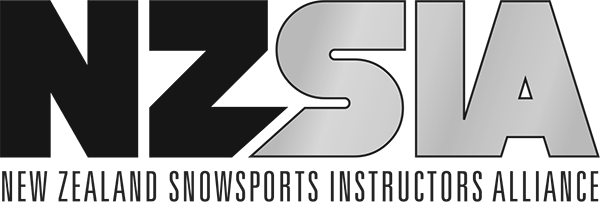The first snowboard indoor lecture of Interski 2019 was delivered by Sweden, to a full audience of fellow snowboarders from around the world.
The organisers (namely Eric Sheckleton) kindly put a snowboard-specific venue in the plans this year, allowing all the looking sideways clan to connect more easily. Thanks Eric!
The Swedish guys, Stefan and Daniel, gave a clear presentation delivering their technical riding model. This encompasses the positioning of the body, the conditions (both snow conditions and individual conditions of the student such as motor skills or fear) and the outcome, or the result.
What’s interesting is that the “positioning” part of this is actually very similar to our own fundamental movement options…

Sweden’s positioning technique
Everything in this model is very similar to what we use in SBINZ, but there’s a few noticeable differences:
- The Swedish focus a lot more on the forces (internal, external and combination) to describe the relationship between the body/board and the snow or outcome.
- They also use each of the above movements to describe the body AND board, as opposed to SBINZ where we use the four movements to describe the body, then edge-pressure-steer to describe the effect on the snowboard.
- The term rotation in Sweden is used to describe the body turning with the snowboard, including the effect of sidecut, de-cambering of the board and steering angle.
- Sweden have an additional term to describe the relationship between the centre of mass and the edge angle of the board; they call this platform angle.
Our Reflections
We really liked the term platform angle and its purpose. We often find ourselves talking about edge angle in NZ and how a quick application of this can affect the pressure on the edge. This, of course, is effected by the position of the body too (not just the edge angle) and the centre of mass.

Platform angle shown in the Swedish slideshow presentation
The most valuable point of this term in our view is to highlight the difference in changing edge angle through a small joint such as the ankles, a bigger lever or the whole body using inclination. For example, a beginner sideslipping on their heels simply lowering their toes. In this example, the edge angle decreases but their COM remains where it is, and the platform angle increases. Or another example would be someone high performance carving and actively lifting their toes through the use of dorsi flexion in the ankles. The COM remains where it is, the platform angle decreases yet the edge angle increases. We really like this and may look to incorporate it into the NZ system in the future.
One thing we did fine a little confusing was their use of the word rotation to describe both the body and board, and their terms “horizontal rotation” and “frontal rotation”. The first of these terms describes rotating on an axis perpendicular to the surface such as through a flat spin 360; this is very specific and relevant. The second describes a different axis of rotation, such as a rider doing a tame dog frontflip or a wildcat backflip. This seems a little confusing as it encompasses fore-aft movement (or longitudinal), even though there would be a rotation around an axis when the board is off the ground – valuable in advanced freestyle as indicated above.
We see more value in using different terms to describe the body rotation and the board pivoting and/or steering, as we can use multiple movements in the body to create steering in the snowboard.
Overall it was a well presented lecture with some good take-aways for us and we look forward to seeing what the Swedish snowboarders deliver on snow. Thanks Sweden!
UPDATE: Additional Thoughts After the On-Snow Clinic
After attending the on-snow portion of the Swedish presentation, we have a little more clarity on their model – in particular the “conditions” element and the purpose of the model itself.
“Conditions” incorporates the snow conditions and mountain environment plus the student’s individual characteristics, such as their body type, motor skills, experience, fears etc. This was the first element that they presented on-snow and we really like that they put priority on this over the hard skills.
The Swedish literature didn’t mention the student’s goals, but this was verbalised in their presentation. The goal is what leads into the “Outcome” part of their model, as shown below…

Sweden’s model
To wrap it up, the purpose of this model is to help educate their instructors in establishing a complete picture of their students.
– Written by Keith Stubbs
